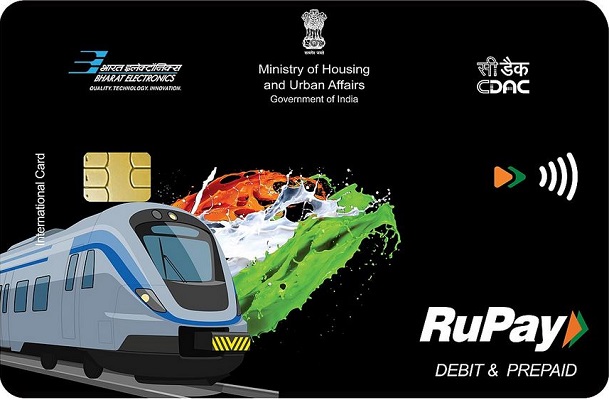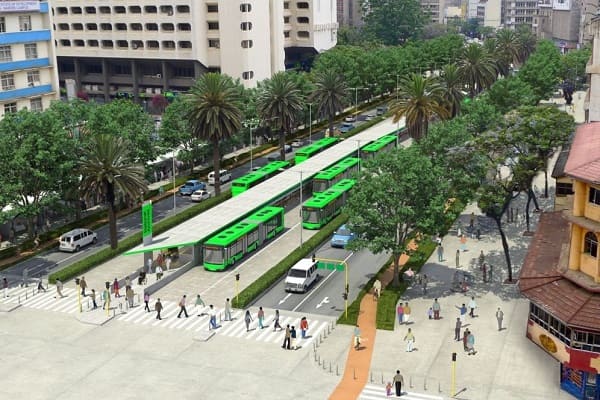 Delhi unveils ambitious Urban Mobility Vision: Luxury Metro Coaches, New Tunnels and Pod Taxi
Delhi unveils ambitious Urban Mobility Vision: Luxury Metro Coaches, New Tunnels and Pod Taxi Qatar approves Saudi Rail Link Agreement, Accelerating Gulf Railway Vision 2030
Qatar approves Saudi Rail Link Agreement, Accelerating Gulf Railway Vision 2030 UP Govt plans to introduce Water Metro services in Ayodhya, Varanasi & Prayagraj
UP Govt plans to introduce Water Metro services in Ayodhya, Varanasi & Prayagraj India’s First Urban Ropeway begins Trial Run in Varanasi, Set to carry 1 Lakh passengers daily
India’s First Urban Ropeway begins Trial Run in Varanasi, Set to carry 1 Lakh passengers daily India and Bhutan to Build First-Ever Rail Link: ₹4,033 Cr Project to Boost Regional Connectivity
India and Bhutan to Build First-Ever Rail Link: ₹4,033 Cr Project to Boost Regional Connectivity Patna to launch Eco-Friendly Water Metro; Trial Run soon between Digha and Kangan Ghats
Patna to launch Eco-Friendly Water Metro; Trial Run soon between Digha and Kangan Ghats Air India Group set to launch Flights Operations from Navi Mumbai International Airport
Air India Group set to launch Flights Operations from Navi Mumbai International Airport Chennai to launch 25-Year Mobility Plan with Unified QR Ticketing and One-App Transit System
Chennai to launch 25-Year Mobility Plan with Unified QR Ticketing and One-App Transit System Kochi Metro bags ₹4.4 crore contract to prepare DPR for Mumbai Water Metro Proejct
Kochi Metro bags ₹4.4 crore contract to prepare DPR for Mumbai Water Metro Proejct Navi Mumbai International Airport set for September launch; IndiGo and Akasa Air to lead Operations
Navi Mumbai International Airport set for September launch; IndiGo and Akasa Air to lead Operations
National Common Mobility Card: A Revolutionary Paradigm or Fleeting Trend?

Metro rail networks in prominent Indian cities such as Delhi, Mumbai, Bangalore, and Chennai boast their own 'smart' cards tailored for commuter convenience. These proprietary cards, however, are confined to their respective metro networks, presenting a significant limitation. Enter the National Common Mobility Card (NCMC), introduced in 2019 with the ambitious goal of revolutionizing transit payments. This contactless card, though laden with potential, is yet to carve a profound impact in the country.
Navigating the NCMC Landscape
The NCMC is no ordinary card; it's a contactless marvel designed to serve as a unified payment solution for diverse transit modes. The visionary concept envisions a single card seamlessly accepted at any metro location across India, transcending the constraints of city-specific 'smart' cards.
Global Perspectives and Operational Mechanisms
Contrasting with India's current scenario, several countries like the UK and Australia have successfully implemented common mobility cards, extending compatibility to NFC-enabled debit and credit cards on Visa and Mastercard networks for public transit. The NCMC operates as both prepaid and debit Rupay cards, soon to include credit card variants. Prepaid cards can be procured at metro stations through online KYC processes, while debit cards are bank-issued. The NCMC debit card, functioning akin to a prepaid card, facilitates offline transit payments across metros, railways, buses, and parking fees.
Challenges Paving the Path
Despite its innovative potential, the NCMC faces substantial challenges hindering widespread adoption. Prepaid cards overshadow debit cards in current usage, with banks in major cities collaborating with metro corporations to launch prepaid NCMCs. However, these cards are not universally accepted, with limitations on bus travel in Delhi and Bangalore and local trains in Mumbai. Additionally, the prevalence of UPI for smaller payments poses a formidable competitor.
Awareness Quandaries and Government Directives
A critical impediment lies in the lack of awareness among metro corporation employees, who persist in promoting in-house 'smart' cards over the NCMC. Personal visits to metro stations in Delhi revealed the staff's preference for in-house cards, indicative of the prevailing awareness challenges. Nevertheless, the government has issued directives mandating NCMC as the default option for new Rupay debit cards, a step toward broader integration.
Beyond Transit: The Unexplored Horizons
While UPI dominates the small payments landscape in India, the NCMC offers distinctive advantages, particularly in instant payment scenarios. The convenience of 'tap and pay' without the need for PINs or additional authentication sets it apart. One intriguing application of the NCMC is in providing parents with a tool for allocating monthly allowances to their children, fostering financial oversight, especially when public transport is part of their daily routine.
Conclusion: Awaiting the Transformation
The NCMC, with its vision of a unified transit payment solution, stands at the cusp of transformation. As India grapples with challenges and embraces directives for wider adoption, the NCMC's potential impact on the nation's commuting landscape remains an unfolding narrative. The journey towards revolutionizing transit payments is underway, with the NCMC poised to play a pivotal role in shaping the future.






